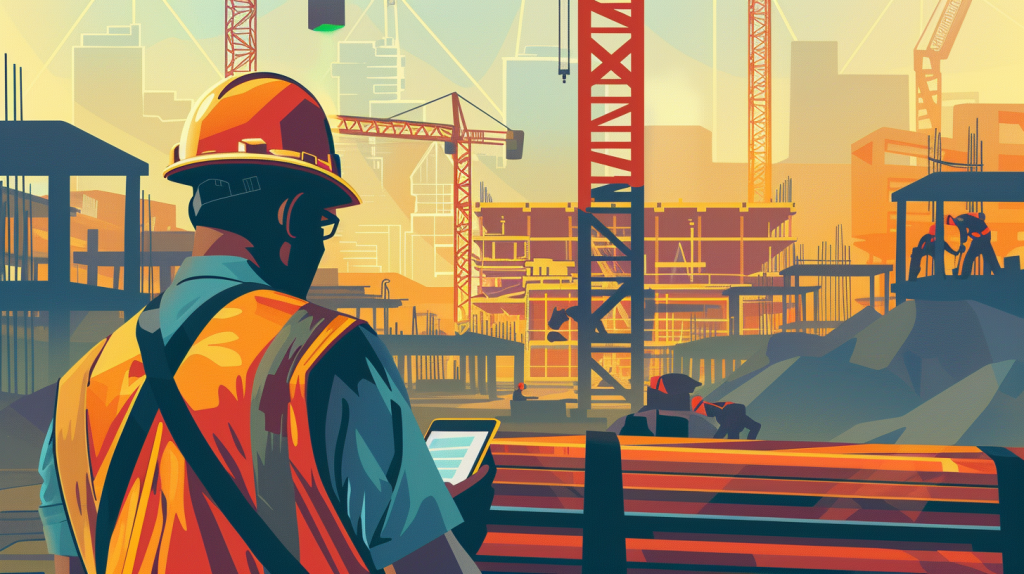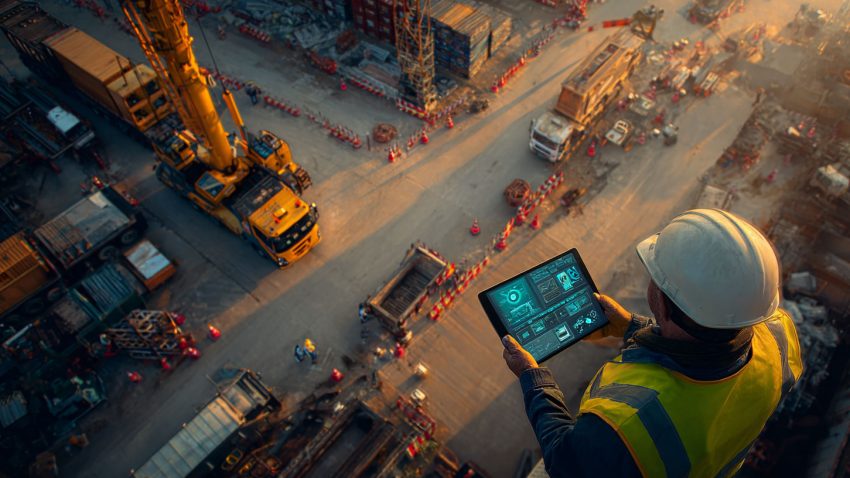The Ultimate Guide to Construction Risk Management: Top Strategies and Tools
Table of Contents:
Explore the ultimate guide to construction risk management. Discover key strategies, essential tools, and best practices for effectively mitigating risks, ensuring compliance, and protecting your workforce
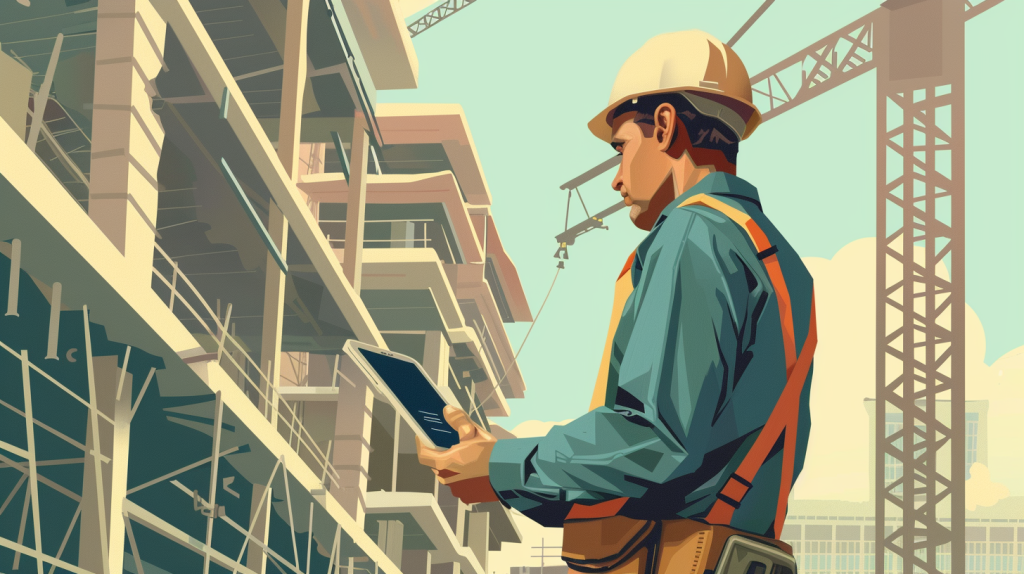
Why Effective Risk Management Matters in Construction
In the high-stakes world of construction, risk management is crucial. Projects involve numerous variables and uncertainties that can impact timelines, budgets, and safety. Effective risk management helps identify, assess, and mitigate these risks, ensuring that projects are completed on time, within budget, and without compromising quality or safety.
The Importance of Risk Management
Risk management is more than just an insurance policy; it’s a proactive approach to anticipating potential issues and implementing measures to address them. By understanding and preparing for risks, project managers can minimize their impact, ensuring smoother project execution and better financial performance.
The Consequences of Poor Risk Management
Ignoring risk management can lead to significant problems, including project delays, cost overruns, safety incidents, and legal issues. These problems can erode profit margins, damage reputations, and result in project failure. Effective risk management is essential for maintaining control over projects and protecting investments.
Key Strategies for Effective Construction Risk Management
Identifying Risks
Comprehensive Risk Assessment
Begin with a thorough risk assessment to identify all potential risks associated with the project. This includes evaluating site conditions, reviewing project plans, and consulting with stakeholders to uncover any hidden threats.
Categorizing Risks
Categorize risks based on their nature (e.g., financial, operational, environmental, safety) and potential impact. This helps prioritize which risks need immediate attention and which can be monitored over time.
Assessing Risks
Probability and Impact Analysis
Evaluate the likelihood of each identified risk occurring and its potential impact on the project. This analysis helps in understanding which risks pose the greatest threats and require robust mitigation strategies.
Risk Matrix
Create a risk matrix to visually represent the probability and impact of each risk. This tool helps project managers quickly identify high-priority risks and allocate resources accordingly.
Mitigating Risks
Developing Mitigation Plans
For each high-priority risk, develop a detailed mitigation plan outlining specific actions to reduce the risk’s likelihood or impact. This could include contingency plans, additional safety measures, or financial reserves.
Implementing Risk Controls
Put mitigation plans into action by implementing risk controls. This may involve training staff, updating safety protocols, securing additional resources, or adjusting project timelines.
Essential Tools for Construction Risk Management
Risk Management Software
Features of Risk Management Software
Modern risk management software offers comprehensive tools to identify, assess, and mitigate risks. These platforms provide real-time tracking, automated risk assessments, and detailed reporting, helping project managers stay on top of potential issues.
Project Management Platforms
Benefits of Project Management Platforms
Integrated project management platforms combine risk management with other project management functions, offering a holistic view of project health. These platforms facilitate communication, document management, and resource allocation, which are crucial for effective risk management.
Data Analytics Tools
Advantages of Data Analytics Tools
Data analytics tools analyze historical project data to identify patterns and predict future risks. By leveraging big data, these tools help project managers make informed decisions and proactively address potential issues before they escalate.
Best Practices for Construction Risk Management
Continuous Monitoring and Reporting
Real-Time Risk Tracking
Implement real-time risk tracking to monitor potential threats continuously. Use tools that provide instant updates and alerts, enabling prompt action when risks are identified.
Regular Risk Reviews
Conduct regular risk reviews throughout the project lifecycle. Regularly updating the risk assessment ensures that new risks are identified and managed promptly.
Effective Communication
Collaborating with Stakeholders
Maintain open lines of communication with all project stakeholders. Regular updates and transparent reporting build trust and ensure everyone is aware of potential risks and mitigation strategies.
Training and Development
Invest in training for your team to ensure they understand risk management processes and tools. A well-trained team is better equipped to identify and mitigate risks effectively.
Documentation and Compliance
Maintaining Detailed Records
Keep detailed records of all risk assessments, mitigation plans, and actions taken. Documentation is crucial for compliance, project reviews, and learning from past projects.
Ensuring Regulatory Compliance
Stay up-to-date with industry regulations and standards. Ensure that your risk management practices comply with legal requirements to avoid penalties and legal issues.
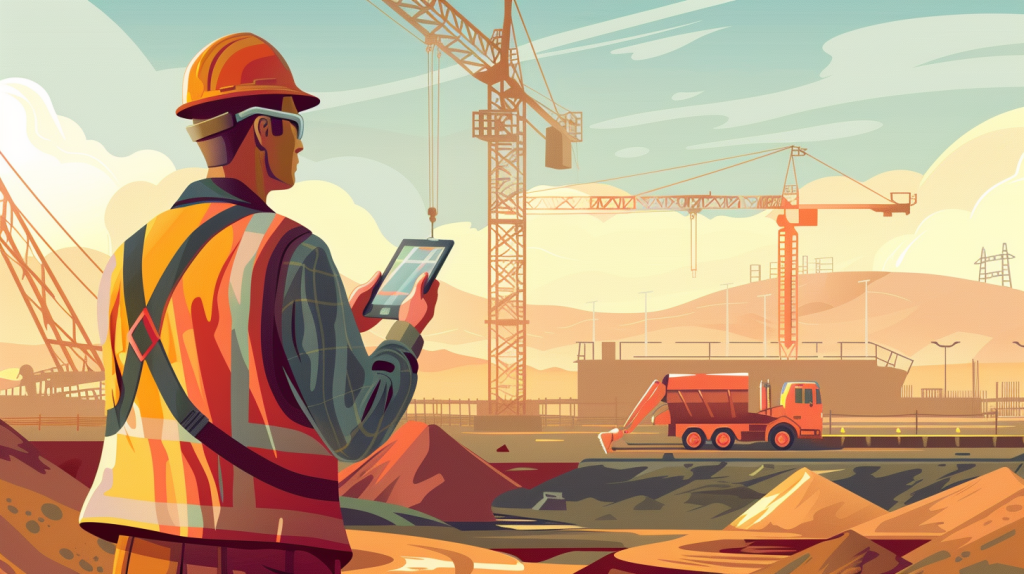
Top 12 Tips for Effective Construction Risk Management
1. Conduct Comprehensive Risk Assessments
Identify all potential risks at the start of the project. Thorough assessments help in understanding the scope and nature of possible threats. Engage with all stakeholders to ensure no risk is overlooked.
2. Use Probability and Impact Analysis
Evaluate the likelihood and impact of each risk. This helps prioritize risks and focus on those with the greatest potential to affect the project. Quantitative assessments can provide a clearer picture of risk exposure.
3. Develop Detailed Mitigation Plans
Create specific actions to reduce risks. These plans should include steps to prevent risks and strategies to deal with them if they occur. Detailed plans provide clear guidelines for action.
4. Implement Real-Time Risk Tracking
Monitor risks continuously with modern tools. Real-time tracking ensures immediate awareness and response to new risks. Tools that offer alerts can enhance responsiveness.
5. Conduct Regular Risk Reviews
Update risk assessments throughout the project. Regular reviews ensure that emerging risks are identified and managed promptly. Adjust plans as necessary to reflect new information.
6. Maintain Open Communication
Keep stakeholders informed about potential risks. Transparent communication builds trust and ensures coordinated risk management efforts. Regular meetings and updates can keep everyone aligned.
7. Leverage Advanced Tools
Use software and platforms designed for risk management. These tools offer features like automated risk tracking, reporting, and analysis. Advanced analytics can provide deeper insights into risk trends.
8. Train Your Team
Ensure your team understands risk management processes. Regular training sessions keep everyone up-to-date on best practices. A knowledgeable team is crucial for effective risk mitigation.
9. Maintain Detailed Documentation
Keep records of all risk management activities. Detailed documentation is essential for compliance and future project planning. It also aids in learning from past experiences.
10. Ensure Regulatory Compliance
Stay compliant with industry regulations. Regularly review and update risk management practices to align with legal requirements. Compliance reduces the risk of legal issues and fines.
11. Use Data Analytics
Analyze historical data to predict future risks. Data-driven insights help in proactive risk management. Historical trends can provide valuable lessons for current projects.
12. Adjust Plans as Needed
Be flexible and adjust mitigation plans based on new information. Adaptability is key to effective risk management. Continuous improvement should be a goal for risk strategies.
Achieving Mastery in Construction Risk Management
Mastering construction risk management is essential for the successful completion of any project. By leveraging advanced tools and implementing proven best practices, such as comprehensive risk assessments, continuous monitoring, and effective communication, you can ensure your projects are protected from potential threats.
Imagine a construction project where risks are anticipated, managed, and mitigated with precision. Where potential issues are addressed before they escalate, and project outcomes are consistently positive. This is the future of construction risk management—a future where project success is not left to chance. Let’s explore how you can make it a reality for your projects.
StruxHub enhances efficiency and coordination across all project phases, providing a single source of truth that eliminates silos and fosters collaboration. Real-time updates, financial management tools, and seamless communication features ensure that all team members and stakeholders are aligned and informed, reducing the risk of errors and delays. With comprehensive solutions for document management, risk mitigation, and quality control, StruxHub maintains project integrity and safety, while mobile access and integration capabilities further enhance project flexibility and efficiency.
StruxHub’s Key Features and Benefits:
- Advanced Delivery Management: Automate and optimize your delivery schedules, ensuring materials arrive just in time, every time.
- Site Communication: Utilize georeferenced maps and instant messaging to keep every team member informed and aligned.
- Construction Materials Management: Track inventory levels and manage materials procurement with ease, reducing waste and avoiding project delays.
- Construction Safety & Inspection Workflows: Implement customizable mobile forms for conducting safety inspections and managing compliance documentation effortlessly.
- Short-Term Scheduling: Visualize project tasks with detailed floor plans, linking each activity to specific locations for better planning accuracy.
- Construction Resource Management: Efficiently allocate personnel and equipment, maximizing productivity and reducing idle time.
StruxHub’s Product Offering:
- StruxHub Deliveries: Simplifies the coordination of incoming deliveries, ensuring materials and equipment are precisely timed to project needs.
- StruxHub Logistics: Offers intelligent site logistics planning, from crane scheduling to space allocation, for smoother operations.
- StruxHub Safety: Elevates on-site safety standards with easy-to-use tools for inspections, permits, and incident reporting.
- StruxHub Scheduling: Enhances project timelines with intuitive scheduling tools that ensure tasks are completed efficiently and on time.
With StruxHub, construction companies can look forward to a streamlined, more efficient project execution that delivers on time and within budget. Embrace the power of innovation and take your construction projects to the next level.
Don’t miss out on the opportunity to optimize your construction management processes with StruxHub. Sign up for a free demo today. Let’s build smarter, together.
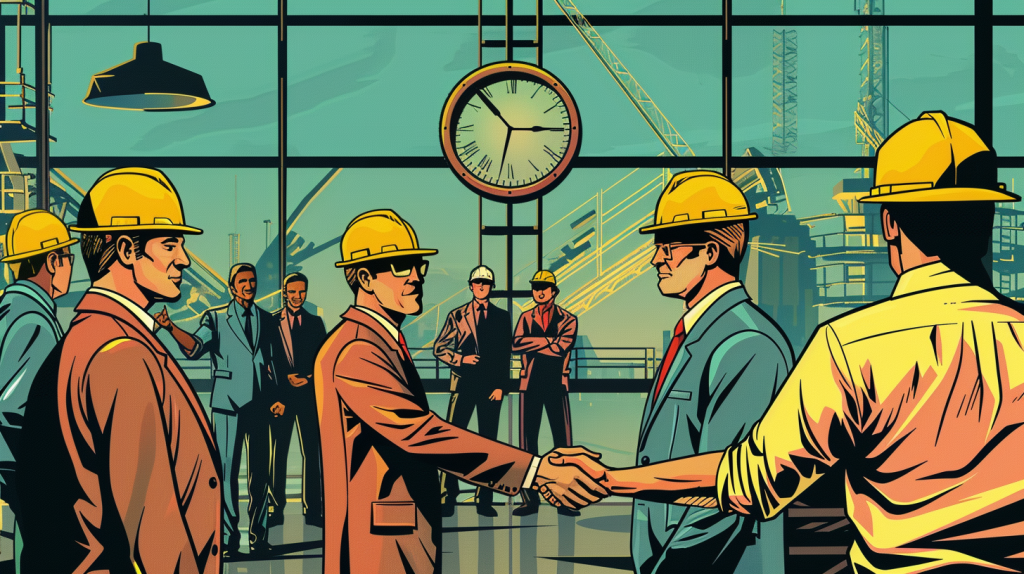
StruxHub
Discover how StruxHub can revolutionize your construction management. Contact us today!

StruxHub
Discover how StruxHub can revolutionize your construction management. Contact us today!
FAQ Section
1. What are the key components of a comprehensive risk management plan in construction?
A comprehensive risk management plan in construction involves several key components. Firstly, it includes a thorough risk assessment to identify all potential risks associated with the project. This involves evaluating site conditions, reviewing project plans, and consulting with stakeholders to uncover any hidden threats. Secondly, it categorizes these risks based on their nature (e.g., financial, operational, environmental, safety) and their potential impact. This categorization helps prioritize which risks need immediate attention and which can be monitored over time.
The plan also includes probability and impact analysis to evaluate the likelihood of each risk occurring and its potential impact on the project. This analysis helps understand which risks pose the greatest threats and require robust mitigation strategies. A risk matrix is often created to visually represent the probability and impact of each risk, helping project managers quickly identify high-priority risks and allocate resources accordingly.
Mitigation plans are another crucial component. For each high-priority risk, the plan should outline specific actions to reduce the risk’s likelihood or impact. This could include contingency plans, additional safety measures, or financial reserves. Finally, the plan should detail how to implement these risk controls, such as training staff, updating safety protocols, securing additional resources, or adjusting project timelines.
2. How does real-time risk tracking improve construction project management?
Real-time risk tracking significantly improves construction project management by providing immediate awareness and response to potential threats. With real-time tracking tools, project managers can monitor risks continuously, ensuring that any new risks are identified as soon as they arise. This immediate detection allows for swift action, preventing minor issues from escalating into major problems.
Real-time tracking also enhances decision-making. Project managers have access to the most current data, allowing them to make informed decisions quickly. This is particularly important in construction, where delays can lead to significant cost overruns and schedule disruptions. By having up-to-date information, managers can allocate resources more effectively, adjust timelines, and implement mitigation measures promptly.
Moreover, real-time risk tracking tools often come with alert features that notify project managers of any significant changes or new risks. This proactive approach ensures that no risk goes unnoticed and that the project team can address issues before they impact the project’s progress. Overall, real-time risk tracking leads to more efficient project management, better resource allocation, and a higher likelihood of project success.
3. What role does communication play in effective risk management in construction?
Communication plays a crucial role in effective risk management in construction. Maintaining open lines of communication with all project stakeholders ensures that everyone is aware of potential risks and the strategies in place to mitigate them. Regular updates and transparent reporting build trust and foster collaboration, which is essential for coordinated risk management efforts.
Effective communication helps in identifying risks early. Team members and stakeholders are more likely to report potential issues when they know their concerns will be heard and addressed. This proactive approach allows project managers to incorporate diverse perspectives into the risk assessment process, leading to a more comprehensive understanding of potential threats.
Furthermore, clear communication ensures that everyone understands their roles and responsibilities in managing risks. Regular meetings and updates keep the team aligned and focused on the project’s goals. Training sessions on risk management processes and tools ensure that all team members are equipped to identify and mitigate risks effectively. In summary, strong communication enhances collaboration, supports early risk identification, and ensures coordinated and effective risk management.
4. How can data analytics tools aid in predicting and managing construction risks?
Data analytics tools play a pivotal role in predicting and managing construction risks. By analyzing historical project data, these tools can identify patterns and trends that might indicate potential risks. For example, if certain types of projects or conditions have consistently led to delays or cost overruns in the past, data analytics can highlight these correlations, allowing project managers to anticipate similar issues in future projects.
Predictive analytics can also assess the probability of different risks occurring and their potential impact. This insight enables project managers to prioritize risks based on their likelihood and severity, focusing their mitigation efforts where they are needed most. Advanced analytics can even simulate various scenarios, helping managers understand how different risks might interact and what the overall impact on the project could be.
Moreover, data analytics tools can provide real-time updates and alerts, helping project managers stay informed about the current risk landscape. This real-time monitoring allows for immediate action, preventing minor issues from escalating. Overall, data analytics tools enhance the ability to predict, prioritize, and manage construction risks, leading to more informed decision-making and better project outcomes.
